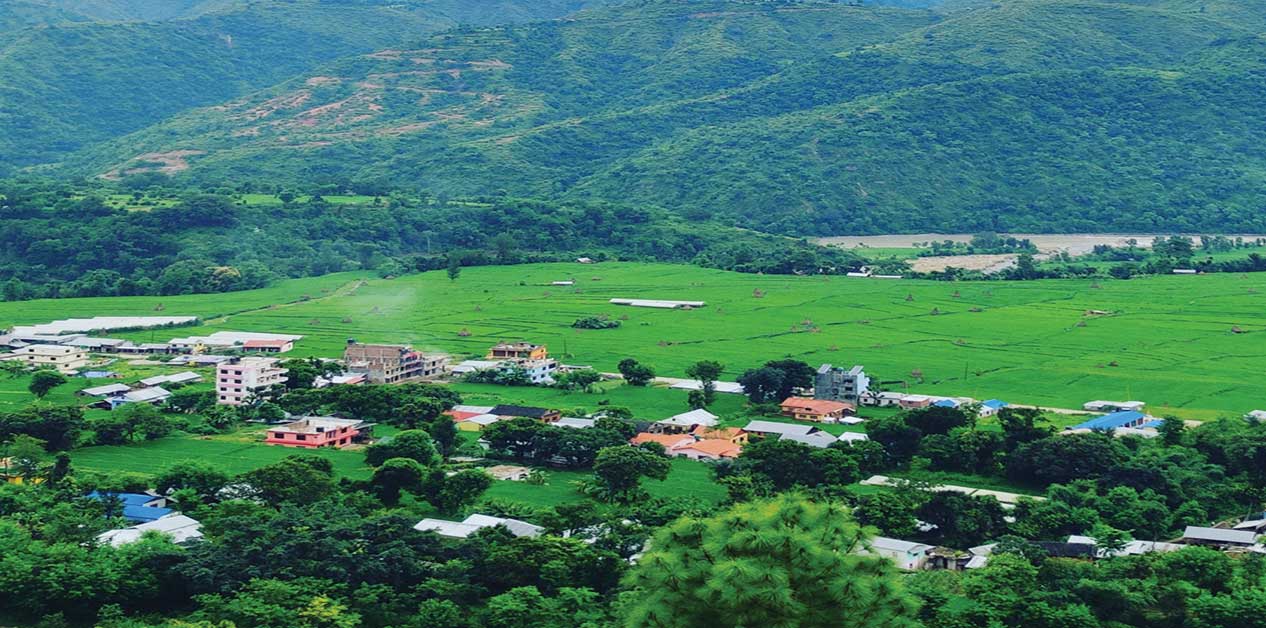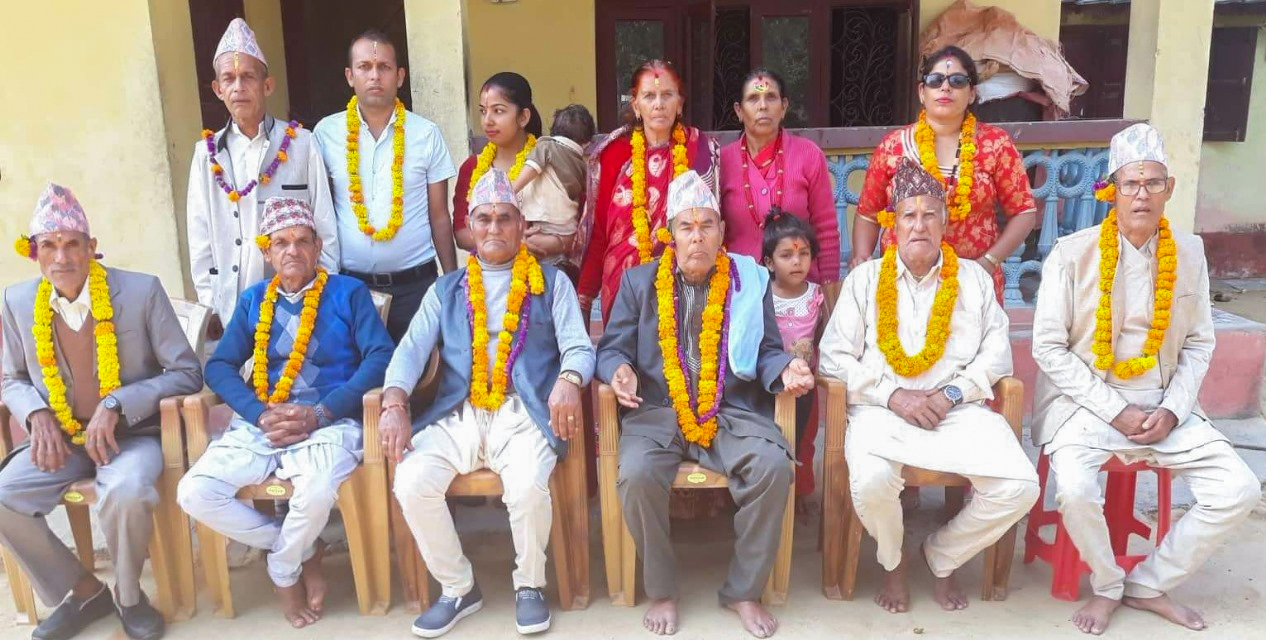

SINDHULI: Bitijor Bhadaure in Sindhuli. Here, the trees in the fields bear fruit heavily: the Junar (sweet orange), which, though sharing the common orange’s scientific name (Citrus sinensis), is celebrated as a distinct indigenous Nepali variety, and the oranges. The memory of Tihar from my childhood is connected to that very soil. When the cold air of Kartik (a Nepali month, roughly from mid-October to mid-November) touched the village courtyard, and the village turned yellow with the Junar and oranges heavily fruiting in the fields, the festive spirit of Tihar would brighten the village. As there were no reading facilities in the village, I studied while staying at my maternal uncle’s house in Bhiman, Sindhuli. The school was on break from Dashain to Tihar. Carrying the excitement of celebrating Tihar, along with the fervor of Dashain, I would return to the village. My arrival in the village was no less than that of a guest. Friends would come to meet me. Discussions about my studies would run throughout the village. The eldest son of the house, studying outside. Naturally, I would receive special attention at home too.
Tihar preparations: The village excitement
The festive air of Tihar would begin in the village even before Dashain ended. Mother would get busy preparing for Tihar. A bunch of sweets and bananas was saved in the backyard, which the sisters would give to their brothers on the day of Tika. Marigolds, globe amaranth, and chrysanthemums bloomed in the fields. Sisters would bring Bhaimasala (sweets and dry fruits) from the market—almonds, cashews, raisins, coconut, and figs, among others. These dry fruits were only seen during Tihar back then. We were allowed to eat them only after taking the share given by the sisters after the Tika ceremony. Now, such dried fruits are always available at home, so these fruits are not very special. Back then, the special sweetness of Tihar was found in these. The specialty of Bitijor was the fields full of heavily fruiting trees. We didn’t have to travel to the market to get fruits for the festivals. Sweet orange and orange trees bore fruit heavily in the fields. Picking oranges from the tree with our own hands early in the morning and tasting them—that flavor truly delighted the heart. These fruits filled Tihar with sweetness. These fruits were a symbol of this village’s soil, hard work, and self-reliance. Whether for distributing during Deusi-Bhailo, decorating the Tika plate, or gifting to neighbors, Junar and oranges connected the village’s Tihar to nature.
The competition of cracking hard walnuts
The fun of cracking hard walnuts was a unique attraction of Tihar. We children would really enjoy it while placing the walnut on the grinding stone and hitting it to crack it, and then using a needle to extract the kernel. A kind of competition would ensue to crack the walnuts. Sometimes the stones would crush our hand while cracking a walnut; even that pain felt enjoyable. The painstakingly collected walnut kernels would be fed by the sisters to their brothers on the day of Tika. This process wasn’t just food preparation; it was a part of the loving atmosphere of the village. Now, Dante Okhar (soft-shelled walnuts) can be cracked and eaten with just teeth and hands.
Mother would prepare ceremonial sweets like Selroti and Anarsa, both traditional Nepali delicacies for auspicious occasions. There were no other sweets here. Gradually, other sweets like Khajuri and Patrey also started being made at home. During Tihar, Selroti was enough to sustain us. The courtyard was plastered with cow dung, and the house was tidied up. Marigold, chrysanthemum, and globe amaranth flowers were grown in the fields specifically for Tihar. Those flowers were picked and made into garlands. Those garlands decorated the house door and rooms. Those flowers were used to worship and garland the crows, dogs, cows, and oxen. They were, of course, also meant to adorn the necks of sisters and brothers on Bhai Tika day. Every house in the village lit small, baked clay oil lamps, or diyos, on the evening of Laxmi Puja; it was a sight to see, as one home often used over a hundred to light up the night. In the absence of electricity, the soft light of the oil lamp (Tuki) and the diyo illuminated the courtyards and rooms. This light of Tihar was not just the light of the diyo; it was the light of the village’s love.

Author’s Family
Deusi-Bhailo: Rhythm of the Madal
The Madal (a traditional hand drum from Nepal, widely used in folk music to provide rhythm) would start playing in the surrounding villages even before Tihar arrived. The Deusi-Bhailo (traditional Tihar caroling) would continue until Bada Ekadashi. The village lanes echoed with the tune of “Deusi Re, Bhailo Re” sung to the rhythm of the madal and flute. We children would form groups and wander through the village. Some would give money, others would give Selroti. The tunes we sang in the Deusi-Bhailo groups were always traditional. Chanting “Rato Mato, Deusi Re, Chiplo Bato Deusi Re” and dancing to the beat of the madal, we would forget the cold of the night. Even the elders would enjoy the rhythm of the madal.
The day of Bhai Tika
Tihar was special at our house, where my seven paternal uncles (from my father’s side) would gather to receive Tika from their only sister, my aunt. The gathering of the seven uncles made this festival unforgettable. The sister would come to the eldest brother’s house for the Tika. Among the seven uncles, some were in Thalkley of Sindhuli, some in Tinpatan, and some in Jhorahat of Morang. When all seven brothers gathered in one place, the joy of Tihar in our house would double. The memory of the last Tihar, when all seven brothers gathered in Sindhuli Madhi, is still fresh. Now, my father is no longer with us, and his absence has significantly diminished the joy of Tihar for us. I don’t think I will be able to experience Tihar like the old times again.
The gambling dungeon
After Bhai Tika, a gambling group would gather at our house. My father would tell my aunt, “Today, one must borrow from the sisters to play, and then one wins!” Indeed, my father often won when playing with the ‘six’ dice throw. Neighbors from all over the village would gather at the gambling place. The commotion of wagering large sums made the atmosphere lively. We children would be engrossed in cheating by secretly placing small side bets and watching the spectacle. The winners would distribute some money, calling it winning share, to us children. The losers would return home disappointed.
Tihar in Bitijor back then was not just a festival for me; it was a part of my childhood, family, and the identity of the village. The scent of Junar and oranges, the rhythm of the madal, the fun of cracking hard walnuts, the Tika from the seven uncles, and the excitement in the gambling den have left an indelible mark on my heart. Today, sitting amidst the dazzling lights of the city and remembering those days, I feel thrilled. However, the joy of Tihar has significantly reduced due to the absence of my father.